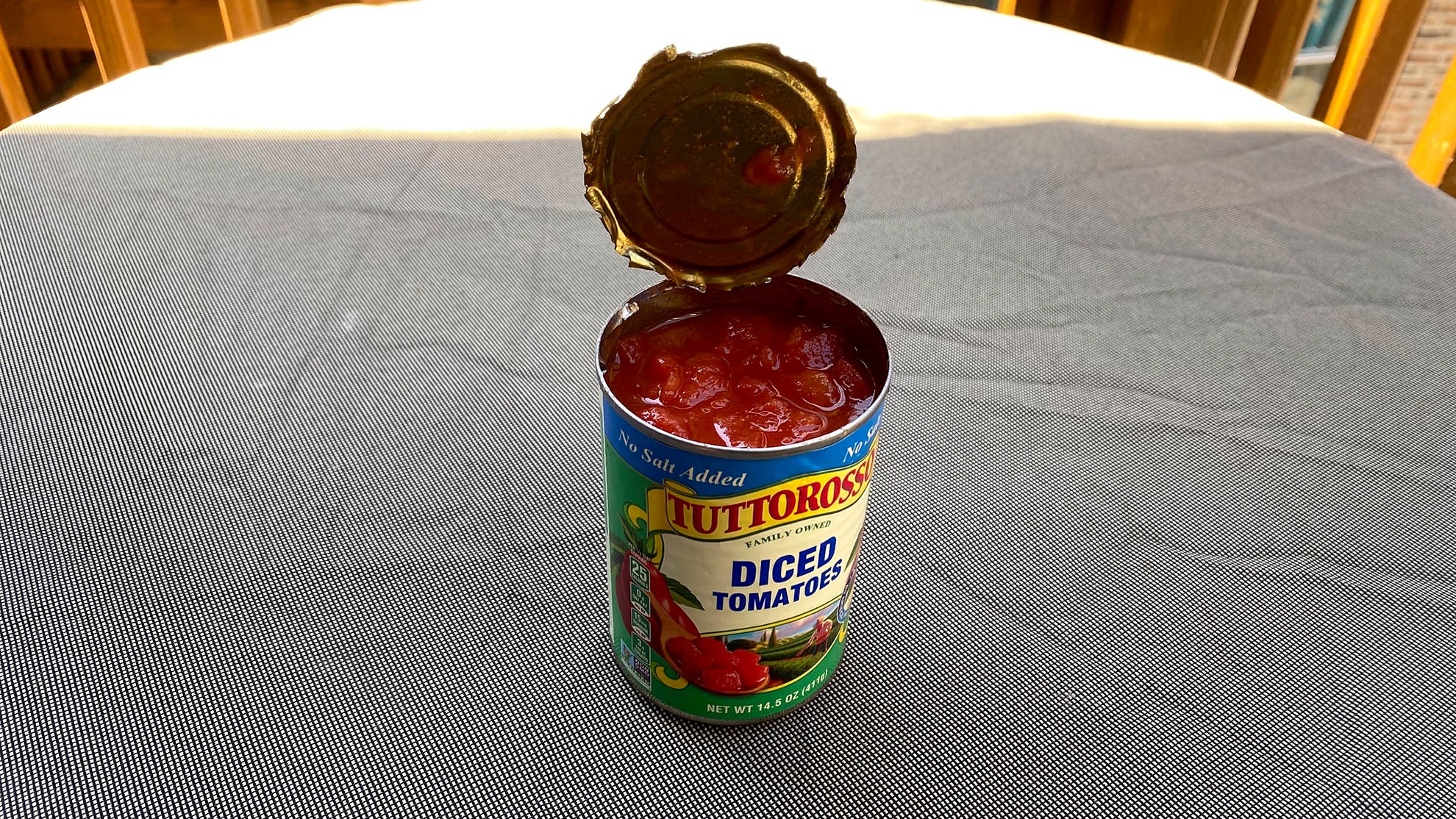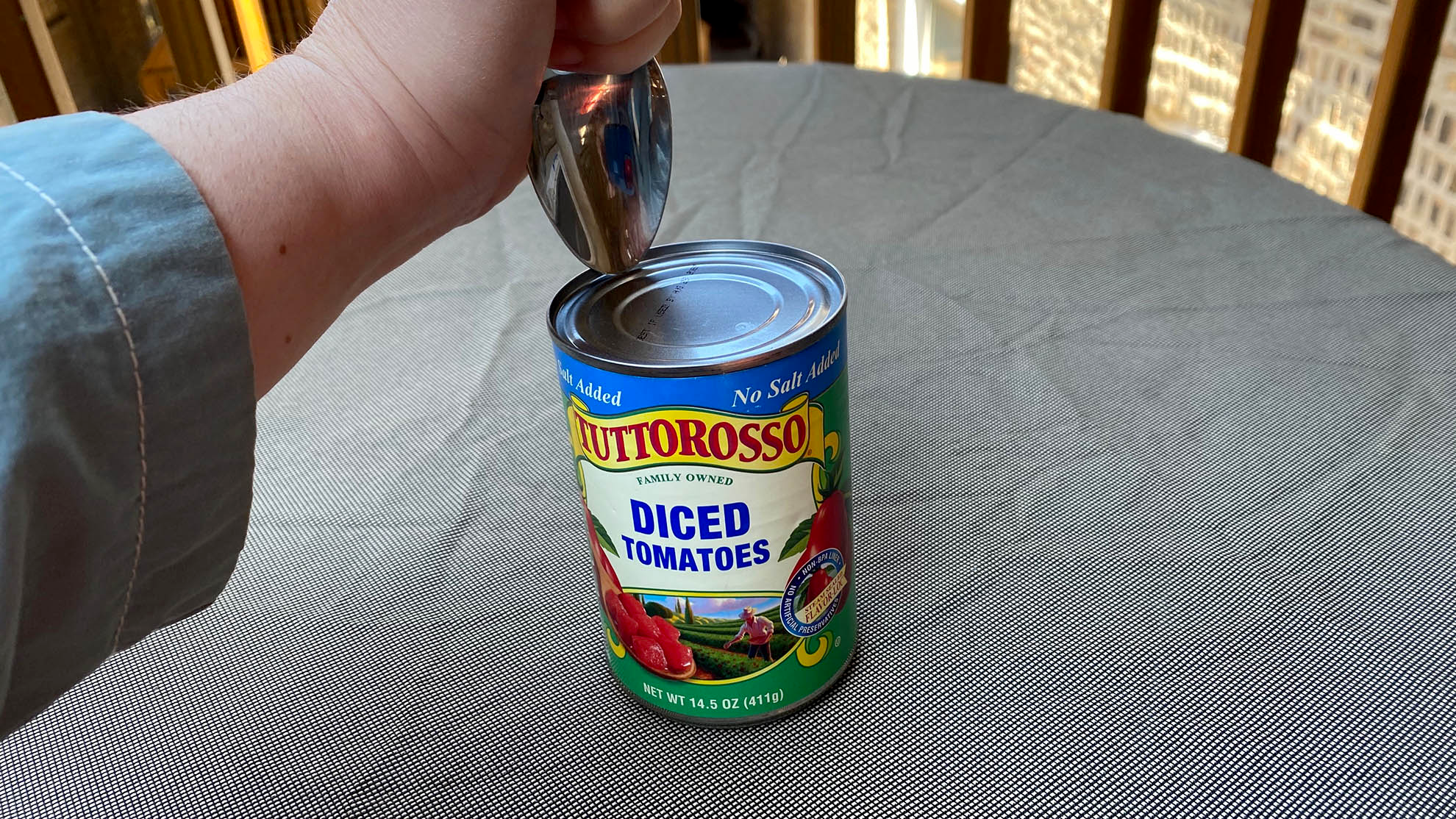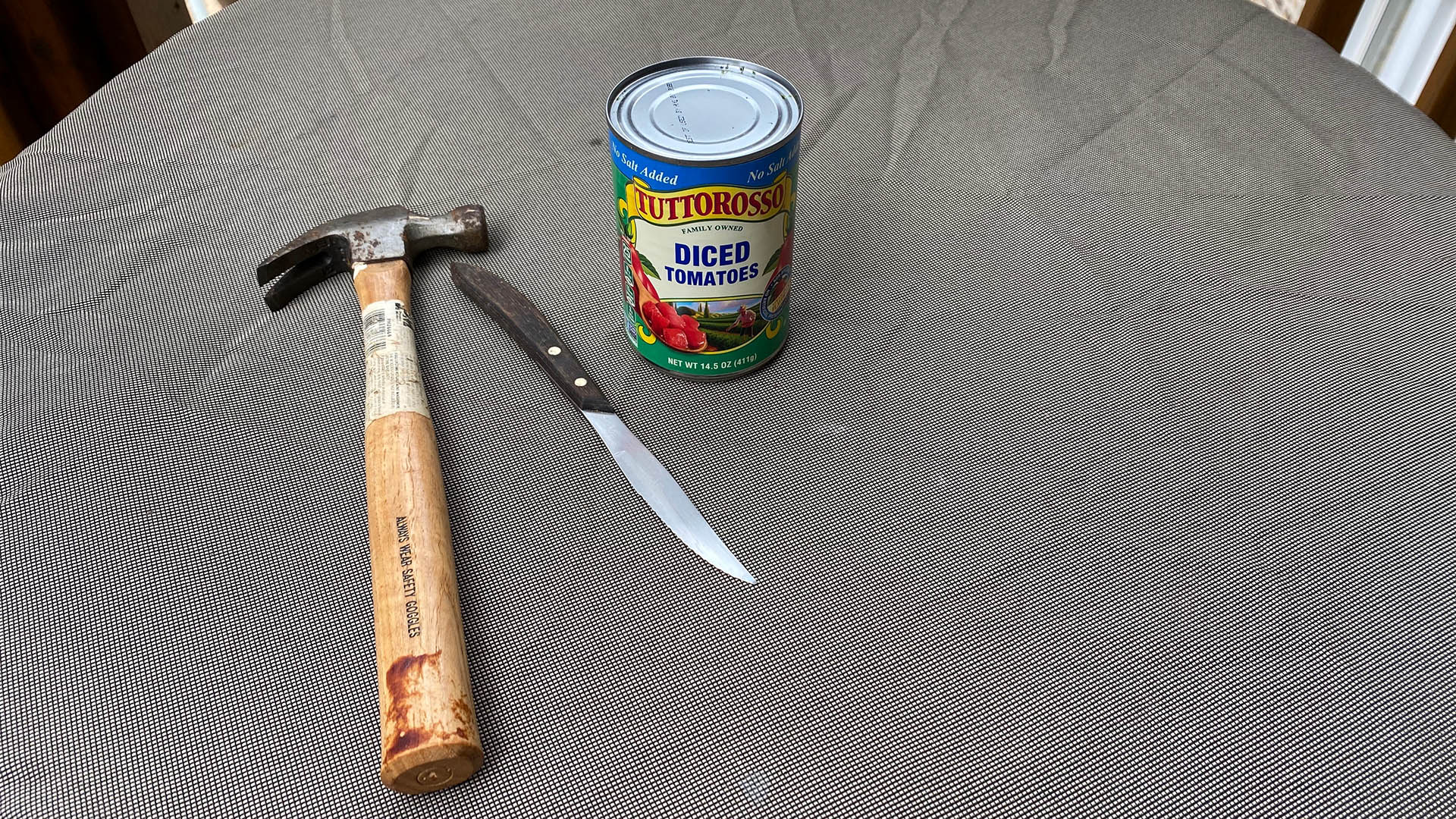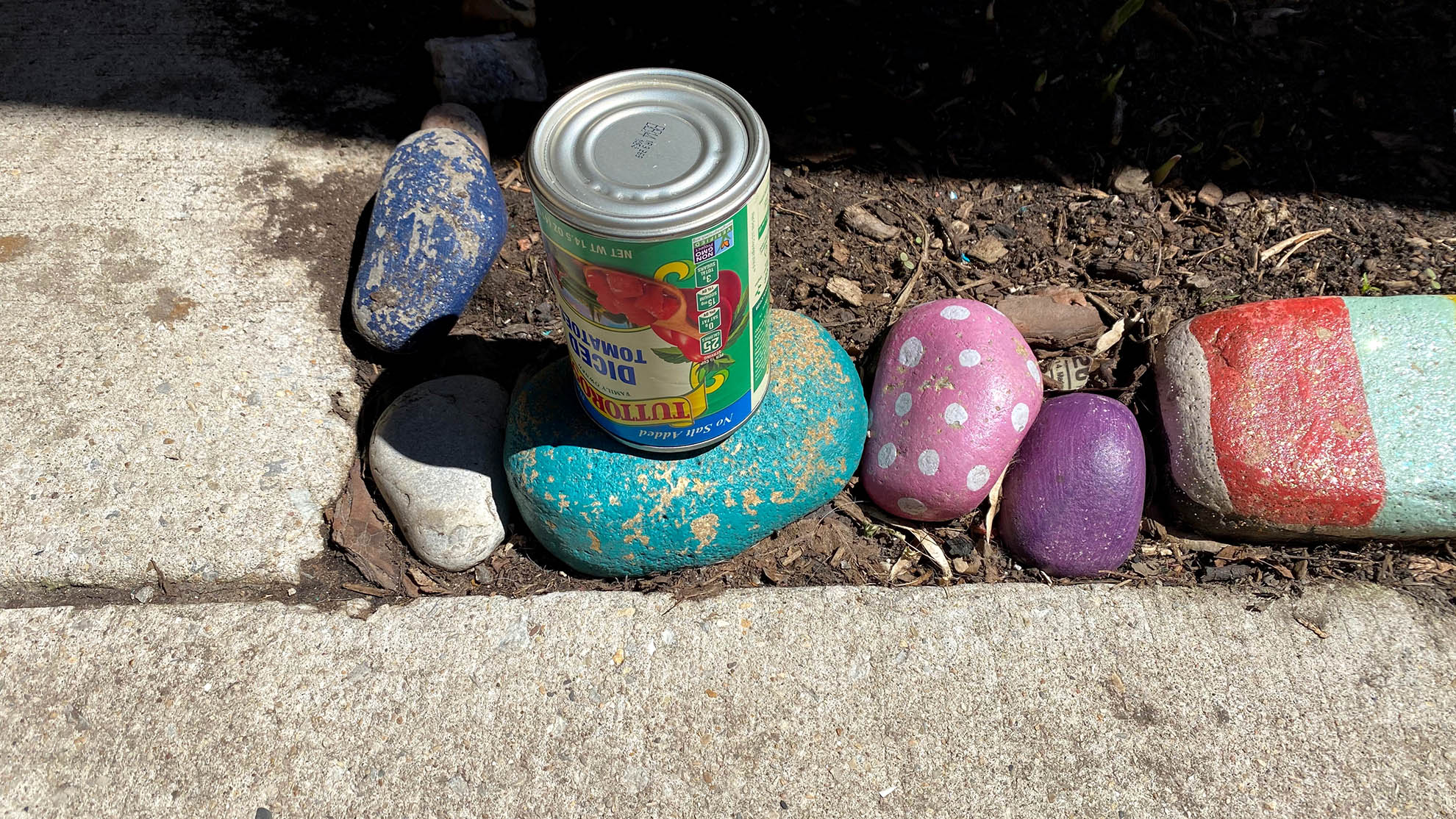How Do You Open A Can Without A Can Opener?
The end times are upon us. Someday very soon, we might have to resort to digging up all the cans of beans we buried in the backyard for safekeeping. We'll haul them to our bunker, stack them in a neat little pyramid, get the camp stove set up, and dig out the old saucepan. By then, we'll be very hungry, and we'll reach with greedy anticipation for the closest can. And then we'll realize something terrible: We forgot to bring a can opener into the bunker.
But this is not a time for despair! (Aside from it being the end of the world.) You can still open that can. You can still have those beans. You can still live to fart another day.
Here's a fun historical fact for you: The first can opener wasn't invented until approximately 50 years after the can itself. It's like it didn't even occur to the early inventors and manufacturers that maybe it would be nice to have a special tool to open those cans. But that is what happened.
Canned food was originally reserved exclusively for the military. Soldiers and sailors had plenty of sharp implements at their disposal to cut the cans open. Perhaps the invention of a new tool for the sole purpose of opening cans seemed superfluous? Or somehow unmanly? Later when canned food started to be distributed to the civilian masses, the cans bore this instruction: "Cut round the top near the outer edge with a chisel and hammer."
The first commercial can openers were finally patented in the 1850s. They were shaped like claws to cut around the edge of the can and were very, very sharp. Shortly after, inventors started messing around with two-wheeled cutters, but the model that grips and cuts simultaneously, the same one we know and love and use today, didn't appear till the 1930s.
So let's hearken back to earlier, simpler times and try using the tools at our disposal to get this can open. There are several options. None of them are particularly good, but that is why people spent more than a century perfecting the can opener.
Option 1: A Spoon
Take a metal spoon. Rub it firmly and decisively in one spot at the ridge of the top of the can where it connects to the edge. Keep rubbing until you wear a hole through the lid. Move the spoon to another spot nearby. Do the same thing. Repeat until the lid is loose enough to pry off with the spoon.

Option 2: A Chef’s Knife
You don't want to do the full Crocodile Dundee here and stab the hell out of the lid. That would ruin the knife, and then you'd be out of a good knife and a can opener. Instead, hold the knife handle firmly and lever it against the can so that the bottom of the blade pokes a hole in the lid. Work your way around the rim of the can until the top is loose, then use the knife to get it the rest of the way off.
Option 3: A Chisel (Or Some Other Kind of Knife) and a Hammer
If this was good enough for people who lived 200 years ago, it's surely good enough for you. Position the chisel (or knife) end at the edge of the lid facing straight down. Give the end a solid whack. Move it over and whack it again. If you are using a knife, it's advisable to keep the blade facing away from your hand.
Option 4: A Rock
Hold the can upside down. Scrub it briskly against the surface of the rock or a patch of concrete. Eventually, you will break the seal and liquid will start to seep out. Be careful that you don't accidentally dump the entire contents of the can onto the ground.
I decided to test-drive each of these methods to open up a can of tomatoes that were essential to the butter chicken I was making for lunch. To make it more interesting (i.e., to make sure I actually went through with the experiment), I resolved that I would not eat until I managed to get the can open without an opener.
At first I thought all these methods were a crock, devised by sadistic Boy Scouts or frustrated MacGyvers. The spoon didn't do much but make a few scrapes on the top of the can. The edge of the chef's knife left a few tiny dimples. The concrete left a few scuffs. Maybe I just lack the necessary brute force. (I was never, after all, a Boy Scout, merely a Brownies dropout.)
In conclusion: the only one of these methods that worked for me was the good old-fashioned hammer and knife, since I don't own a chisel. It took about ten minutes and a lot of pent-up frustration to get the can open. The first puncture was by far the most exciting part, but afterward I was really impressed with myself. I probably won't be doing it again, but it's nice to know that I can should the need ever arise. (It seems inefficient, though, to use two tools when you could just have one.) And if I can, you can! But if you've had any success with any of the other methods, please let me know, along with some tips that insure that they actually work.



